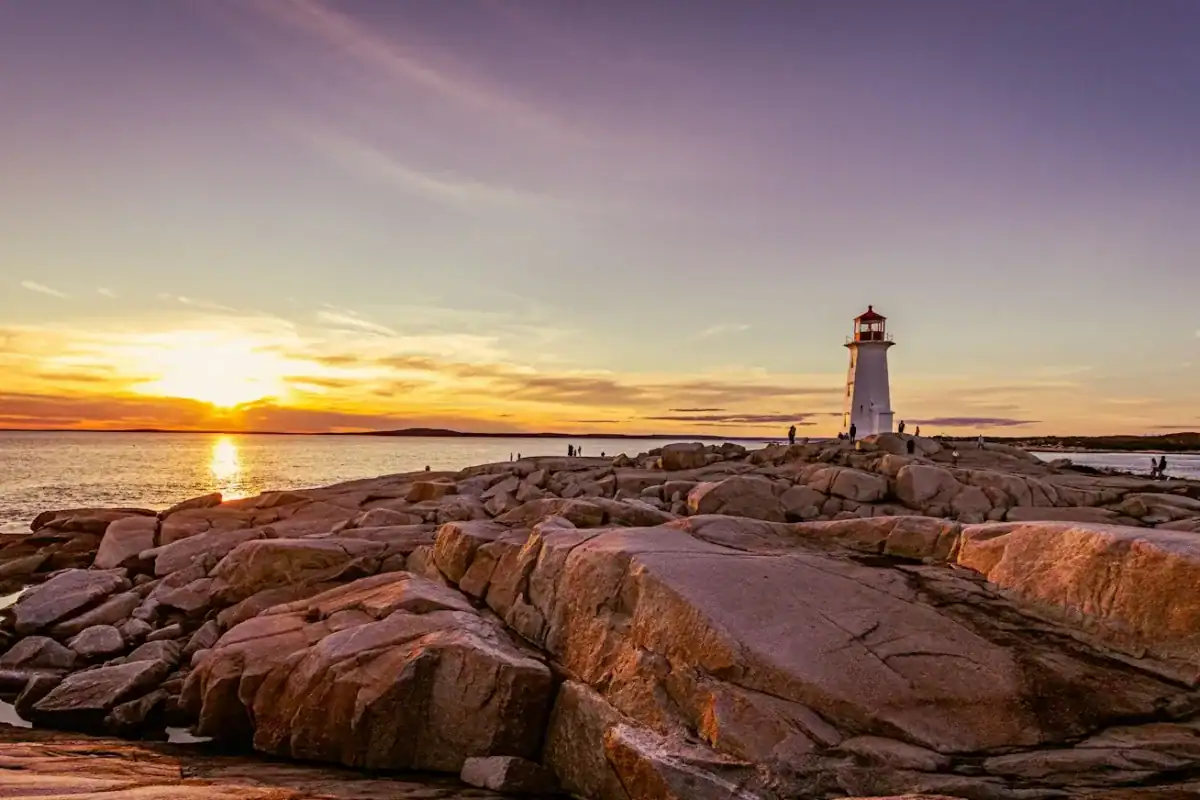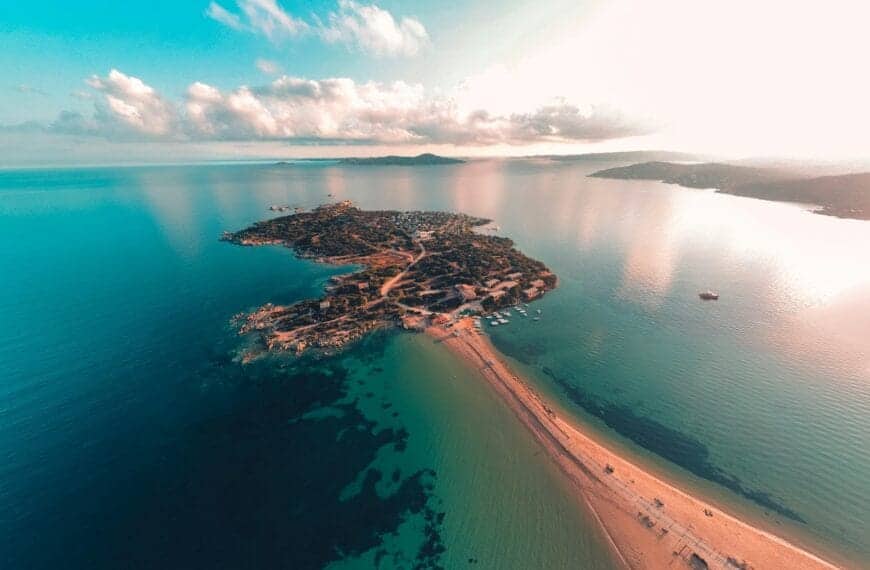Nova Scotia Travel Guide: Coastlines, Culture & Celtic Spirit
Intro to Nova Scotia Travel Guide
Nova Scotia, perched on Canada’s Atlantic edge, is a province where the sea shapes every story. From the highest tides on Earth at the Bay of Fundy to the cliffside roads of the Cabot Trail, the landscapes here are as dramatic as they are inviting. Fishing villages cling to rocky shores, colorful towns preserve seafaring traditions, and coastal cities hum with youthful energy, fueled by universities and a vibrant cultural scene.
This maritime province is not just about views; it’s about rhythms. The rise and fall of the tide, the songs of fiddles in Cape Breton, the laughter of neighbors gathering for a lobster supper. Whether you’re coming for outdoor adventure, Celtic culture, or simply the warmth of Nova Scotian hospitality, this guide will help you plan a trip that captures the essence of the coast.
Best Places to Visit in Nova Scotia
Annapolis Royal | Antigonish | Baddeck | Cape Breton Highlands | Digby | Halifax | Lunenburg | Mahone Bay | Pictou | Wolfville | Yarmouth
💡Quick Facts:
Destination: Nova Scotia
Continent: North America
Country: Canada
Province Nickname: Canada’s Ocean Playground
Area: ~55,284 km² (21,345 mi²)
Population: ~1.05 million (2025 est.)
Density: ~19/km²
Capital: Halifax
Regions/Subregions: Annapolis Valley, Cape Breton Island, South Shore, Northumberland Shore, Bay of Fundy, Eastern Shore, Halifax Metro
Official Languages: English (majority), French (minority, esp. Acadian communities)
Currency: Canadian Dollar (CAD)
Time Zone: Atlantic Time (UTC−4, summer UTC−3)
Main Airports: Halifax Stanfield Intl. (YHZ), Sydney/J.A. Douglas McCurdy (YQY)
Climate: Maritime — cool summers, mild to cold winters, high humidity, coastal fog common
Known For: Cabot Trail drives, Bay of Fundy tides, Peggy’s Cove lighthouse, Cape Breton Highlands, Acadian culture, seafood (lobster, scallops).
🛂Arrival Info:
Visa Requirements: Same as Canada entry rules.
Visa-Free: U.S., EU, UK, Australia, Japan, and others eligible for eTA (Electronic Travel Authorization).
Tourist Stay: Typically up to 6 months.
Immigration Portal: Government of Canada Immigration.
🏥Health Info:
Vaccines Recommended: Routine (MMR, Tetanus, Hepatitis A/B). No special requirements.
Healthcare: High standard; Halifax has largest facilities.
Hospitals: QEII Health Sciences Centre (Halifax), Cape Breton Regional Hospital.
Tip: Visitors need private insurance; non-residents not covered by provincial plans.
🚑 Check travel insurance options for travel emergencies, delays, and medical needs abroad — Get coverage here
💉 Stay Informed with Official Updates: WHO – International Travel & Health | CDC – Travel health updates
🚨Travel Advisory:
Safety Levels: Very safe, low crime rate.
Risks: Winter driving hazards (snow/ice), coastal storms, fog delays.
Civil Rights Concerns: Strong LGBTQ+ protections.
Official Advisories: Follow Government of Canada Travel.
🌍Track Real-Time Official Updates: US Travel Advisory | UK Foreign Travel Advice | Government of Canada | NZ SafeTravel
🥳Holidays:
Canada Day: July 1
Natal Day: 1st Monday in August (Halifax regional holiday)
Thanksgiving: 2nd Monday in October
Christmas Day: Dec 25
New Year’s Day: Jan 1
Remembrance Day: Nov 11
💰Visitor Info:
Currency Use: Credit/debit widely accepted; ATMs in towns.
Tipping: 15–20% at restaurants, standard across Canada.
Duty-Free: Canadian customs rules apply.
Daily Budget (avg.):
Budget: $80–120 CAD
Mid-range: $150–250 CAD
Luxury: $300+ CAD
🛫Airports:
Halifax Stanfield Intl. (YHZ): Main gateway, direct flights to Europe (UK, Germany), U.S., Caribbean.
Sydney (YQY): Serves Cape Breton.
🧳 Delayed or canceled flight? Check if you’re eligible for compensation
🚍Transport:
Urban: Halifax Transit (buses, ferries).
Intercity: VIA Rail “Ocean” train (Halifax–Montreal), Maritime Bus network.
Driving: Right side; car rental common for rural/coastal exploration.
Ferries: Connections to Newfoundland (North Sydney), seasonal ferries to Maine (Yarmouth).
Notes: Scenic road trips (Cabot Trail, Lighthouse Route) are highlights.
🚗 Book reliable airport transfers and in-city rides in advance. Reserve your ride here
🛰️Connectivity:
SIM/eSIM: Bell, Rogers, Telus, Eastlink.
Network: Good in cities; patchy on rural coasts and Cape Breton.
Wi-Fi: Available in hotels, cafes, public libraries.
🛜 Stay connected abroad with affordable eSIM data packs. Get your eSIM here
📜Laws & Etiquette:
Alcohol: Legal drinking age 19; NSLC (Nova Scotia Liquor Corporation) stores.
Smoking: Banned in indoor public spaces.
Dress Code: Casual; warm layers in fall/winter; rain gear year-round.
LGBTQ+: Strong protections; Halifax has active Pride community.
Social Norms: Polite, friendly culture; tipping essential in service industries.
👮Emergency Info:
Emergency Number: 911 (police, fire, ambulance).
Tourist Assistance: RCMP and Halifax Regional Police cover province.
Embassy Links: International travelers use embassies in Ottawa or consulates in Halifax/Toronto/Montreal.
🏛️ Use embassy locator tools: Embassies Worldwide
🌞Weather:
Best Time: June–September (warm, festivals, whale watching).
Winter: Dec–March, cold with snow/ice, coastal winds.
Spring: April–May, mild, blooming landscapes, lingering fog.
Summer: June–Aug, warm (20–25°C), ideal for beaches and trails.
Autumn: Sept–Oct, crisp air, foliage on Cape Breton, Celtic Colours Festival.
🌦️ Stay prepared—check the weather forecast for your destination — Weather Forecast
Nova Scotia Cities and Major Destinations
Halifax — The capital and cultural heart of Nova Scotia, Halifax blends maritime history with a lively, youthful vibe. The Halifax Citadel watches over a waterfront packed with seafood restaurants, craft breweries, and museums like the Canadian Museum of Immigration at Pier 21. Its student population keeps the pubs lively, while nearby beaches and coastal trails let you escape the city within minutes.
Cape Breton Island — A world apart, Cape Breton is home to the famous Cabot Trail, Gaelic traditions, and Acadian villages. Baddeck, once home to Alexander Graham Bell, is a gateway to Bras d’Or Lake, while Cheticamp opens the door to Cape Breton Highlands National Park. The island’s ceilidhs (traditional music gatherings) bring fiddles, step-dancing, and stories to life.
Lunenburg — A UNESCO World Heritage town, Lunenburg is one of the best-preserved colonial settlements in North America. Its colorful waterfront houses and fishing wharves are postcard-perfect, but it’s also a working port where the schooner Bluenose II keeps Nova Scotia’s seafaring legacy alive. Museums, art galleries, and a food scene focused on seafood and local produce add depth.
Peggy’s Cove — A tiny fishing village crowned by Canada’s most iconic lighthouse. Waves crash against smooth granite boulders while lobster boats bob in the harbor. It’s busy in summer but still feels timeless at dawn or dusk.
Annapolis Valley & Wolfville — This fertile valley is Nova Scotia’s wine country, dotted with vineyards, orchards, and farm-to-table dining. Wolfville, home to Acadia University, is the hub, with access to trails, markets, and tidal viewing spots like Cape Split.
Yarmouth & Acadian Shores — On the province’s southwestern tip, Yarmouth and the Acadian Shores combine French Acadian traditions with some of the clearest night skies in North America. The region is part of the UNESCO-designated Starlight Reserve, making it a paradise for stargazers.
Bay of Fundy (Digby, Parrsboro, Advocate Harbour) — The Bay of Fundy is famous for its tidal extremes, where waters can rise over 50 feet. Digby is renowned for scallops, while Parrsboro and Advocate Harbour showcase tidal flats, fossils, and dramatic cliffs.
Truro — Known as the “Hub of Nova Scotia,” Truro is a gateway town where tidal bores surge up the Salmon River. Its Victorian architecture, parks, and central location make it a convenient stop.
Antigonish — A small town with a big cultural footprint, thanks to St. Francis Xavier University. Known for its Highland Games, Antigonish is where Scottish traditions meet academic energy.
Shelburne & Lockeport — These small coastal towns preserve loyalist and shipbuilding history. Shelburne’s historic waterfront has stood in for colonial America in films, while Lockeport boasts Crescent Beach, one of the province’s most photogenic stretches of sand.
Mahone Bay — Just up the coast from Lunenburg, Mahone Bay is beloved for its trio of waterfront churches, boutiques, and art studios. It’s a town that invites slow wandering.
How to Choose Where to Go in Nova Scotia
Travelers often underestimate Nova Scotia’s size — and diversity. Deciding where to go depends on your interests and the season.
- For history and heritage lovers: Halifax, Lunenburg, Grand-Pré, and the Fortress of Louisbourg bring Canadian, Acadian, and maritime history to life.
- For outdoor adventurers: The Cabot Trail, Cape Chignecto, and Kejimkujik offer world-class hiking, kayaking, and cycling.
- For couples and slow travelers: The Annapolis Valley wine country and fishing villages like Mahone Bay or Lockeport invite slower rhythms.
- For families: Halifax’s waterfront, Lunenburg’s Fisheries Museum, and whale-watching cruises are kid-friendly while still engaging for adults.
- For festival-goers: The Celtic Colours Festival in October, Halifax Jazz Festival in July, and local lobster suppers are as much about community as entertainment.
- For winter explorers: Though quieter, Nova Scotia in winter brings snowy landscapes, cozy inns, and chances for cross-country skiing.
Natural Escapes and Scenic Highlights
Cabot Trail — Hugging Cape Breton’s northern coast, the Cabot Trail is one of the world’s great drives. Cliffs drop into the Atlantic, trails lead to highland summits, and lookouts offer sweeping views of forest, sea, and sky. Autumn foliage here rivals anywhere in North America.
Bay of Fundy — Twice daily, the tides reshape the landscape. At low tide, walk on the ocean floor or kayak among sea stacks; at high tide, watch the ocean rise dramatically. The bay is also a hotspot for whale watching, especially humpbacks and minkes.
Kejimkujik National Park — Known locally as “Keji,” this inland park combines canoe routes, lakeside campsites, and some of the best stargazing in Canada. Petroglyphs left by the Mi’kmaq add cultural depth.
Peggy’s Cove Coastline — Smooth granite boulders polished by the sea surround Nova Scotia’s most photographed lighthouse. The setting feels both wild and serene, especially in off-season light.
Cape Chignecto Coastal Trail — For seasoned hikers, this 50-km loop along cliffs and coves delivers solitude and jaw-dropping views. Campsites perch above the world’s highest tides.
Sable Island National Park Reserve — A remote sandbar 300 km offshore, home to wild horses and massive seal colonies. Visits require special permits or organized tours.
Tidal Bore in Truro — Twice daily, the Bay of Fundy’s tides surge up the Salmon River, creating a tidal bore that you can raft on for a thrill ride.
Cultural and Historic Landmarks
Halifax Citadel National Historic Site — This star-shaped fort overlooks the city. Daily reenactments and cannon firings connect visitors to Nova Scotia’s military past.
Lunenburg Old Town — A living UNESCO site, where 18th-century wooden architecture frames a working harbor. The Fisheries Museum of the Atlantic dives deep into maritime life.
Grand-Pré National Historic Site — Tells the story of Acadian settlement and the Great Expulsion of the 18th century. Gardens and interpretive centers honor resilience.
Fortress of Louisbourg — On Cape Breton, this massive French fort has been reconstructed to its 1740s glory. Costumed interpreters bring colonial life into vivid detail.
Pier 21 Immigration Museum (Halifax) — Canada’s equivalent of Ellis Island. Millions of immigrants arrived here, and today, exhibitions highlight their journeys and contributions.
Alexander Graham Bell Museum (Baddeck) — Displays the inventions and life of the famous scientist, including aviation prototypes and personal artifacts.
Sherbrooke Village — A recreated 19th-century town where blacksmiths, printers, and shopkeepers demonstrate trades.
Mi’kmaq Cultural Centres — Across Nova Scotia, Indigenous-led experiences share traditions, crafts, and stories.
Local Food, Arts, and Regional Experiences
Seafood at Its Source — Lobster suppers are a Nova Scotia tradition, especially in fishing villages where the day’s catch goes straight to the table. Digby scallops are world-famous, while chowders and mussels fill coastal menus.
Farm-to-Table in the Annapolis Valley — Wineries like Domaine de Grand Pré and Lightfoot & Wolfville are at the forefront of Nova Scotia’s wine scene. Pair tastings with apple cider, artisanal cheeses, and valley produce.
Craft Beer and Spirits — Halifax boasts one of Canada’s highest brewery densities, with Alexander Keith’s Brewery being a historic anchor. Distilleries producing rum and gin add variety.
Music and Festivals — From Celtic Colours in Cape Breton to Halifax Jazz Festival and Lunenburg Folk Harbour Festival, music thrives year-round. Many pubs host live fiddles or folk on weeknights.
Markets and Artisans — The Halifax Seaport Farmers’ Market and countless local craft fairs showcase everything from Mi’kmaq beadwork to modern ceramics.
Nightlife in Halifax — Argyle Street and the waterfront pubs hum with students, locals, and travelers alike. A night out often ends with live music and late-night donairs, the city’s signature street food.
Must-See Experiences in Nova Scotia
- Drive the Cabot Trail and stop for hikes, whale-watching, and ceilidhs in Cape Breton.
- Witness the Bay of Fundy tides at low tide, then return six hours later to see the sea reclaim the land.
- Photograph Peggy’s Cove Lighthouse at sunrise or sunset when the crowds thin.
- Explore Halifax’s waterfront, from historic tall ships to modern galleries.
- Tour Lunenburg’s colorful streets and learn about shipbuilding at the Fisheries Museum.
- Attend a ceilidh in Cape Breton for fiddles, Gaelic songs, and step-dancing.
- Kayak in Kejimkujik under one of Canada’s darkest skies.
Discover top-rated Nova Scotia tours and experiences, and explore the best things to do in Nova Scotia — from whale-watching cruises on the Bay of Fundy and guided hikes on the Cabot Trail to Halifax food tours and Lunenburg heritage walks.
Getting Around Nova Scotia
Nova Scotia is compact but requires planning.
- By Air: Halifax Stanfield International Airport (YHZ) connects globally. Sydney Airport (YQY) serves Cape Breton.
- By Car: Essential for exploring. Scenic drives like the Lighthouse Route, Evangeline Trail, and Cabot Trail demand your own wheels.
- By Ferry: Ferries link Nova Scotia to Prince Edward Island, New Brunswick, and Maine. Seasonal ferries run to Newfoundland and Sable Island.
- By Bus: Maritime Bus connects larger towns but is infrequent.
- Cycling: Popular along the Cabot Trail for the adventurous. Bike rentals are available in Halifax and Wolfville.
- By Rail: VIA Rail connects Halifax to Montreal, but regional rail is limited.
Best Time to Visit Nova Scotia
Spring (May–June): Orchards bloom in the Annapolis Valley, and coastal hikes reopen. Temperatures range 10–18°C, but fog is frequent.
Summer (July–August): Peak season. Warm days (20–28°C), festivals in full swing, and prime time for whale watching. Book accommodations early.
Fall (September–October): Crisp air, harvest festivals, and foliage along the Cabot Trail. The Celtic Colours Festival draws global visitors. Temperatures 10–15°C.
Winter (November–March): Quiet but cozy. Snow blankets Cape Breton, perfect for cross-country skiing. Coastal storms add drama, though many attractions close.
Daylight hours vary widely, from 8 hours in December to 16 in June.
Best Travel Itineraries in Nova Scotia
3-Day Itinerary
- Day 1: Halifax waterfront, Citadel, Pier 21. Evening at a waterfront pub.
- Day 2: Day trip to Peggy’s Cove and Lunenburg. Seafood lunch, explore Old Town.
- Day 3: Annapolis Valley — wine tastings and farm-to-table dining in Wolfville.
5-Day Itinerary
- Day 1–2: Halifax highlights and coastal day trips.
- Day 3: Drive to Bay of Fundy for tidal viewing and Digby scallops.
- Day 4: Explore Annapolis Valley wineries and Acadian heritage at Grand-Pré.
- Day 5: Return to Halifax with a stop in Truro for the tidal bore.
7-Day Itinerary
- Days 1–2: Halifax, Peggy’s Cove, and Lunenburg.
- Days 3–4: Bay of Fundy and Annapolis Valley.
- Days 5–7: Drive the Cabot Trail in Cape Breton, with hikes and ceilidhs.
10-Day Itinerary
- Days 1–3: Halifax, Peggy’s Cove, Lunenburg, and Mahone Bay.
- Days 4–5: Bay of Fundy tides, whale watching, and wineries.
- Days 6–9: Cabot Trail loop with stops in Baddeck, Cheticamp, and Cape Breton Highlands.
- Day 10: Return south via Antigonish or Sherbrooke Village.
Travel Safety and Cultural Etiquette
Nova Scotia is one of Canada’s safest provinces. Crime rates are low, but exercise normal urban precautions in Halifax at night. Coastal driving requires caution in fog and rain. Respect Mi’kmaq cultural sites — some ceremonies or areas may be closed to visitors. Tipping in restaurants is 15–20%. At ceilidhs or community suppers, join in respectfully — participation is part of the spirit.
Final Planning Checklist for Nova Scotia
- Book ahead: Summer and fall accommodations, ferries, and tours fill fast.
- Pack layers: Weather shifts quickly; fog and sea breezes cool even summer days.
- Rent a car: Essential for Cabot Trail, Annapolis Valley, and Acadian Shores.
- Carry cash: Small villages and markets may not accept cards.
- Download offline maps: Cell service is patchy in rural Cape Breton.
- Bring binoculars: For whale and seabird watching.
- Plan for festivals: Align your visit with Celtic Colours or a local lobster supper.
- Check ferry schedules: Especially for cross-border or seasonal services.
- Bring rain gear: Atlantic weather can change in minutes.
- Use travel insurance: Ferry cancellations or weather delays are common.
- Pack bug spray: Blackflies can be intense in June.
- Allow buffer days: Coastal drives often take longer than GPS suggests.
Plan Smarter, Travel Better
Nova Scotia isn’t just a province you pass through — it’s a place where every curve of coastline and every story told over a lobster dinner invites you to slow down. Plan with intention, but leave space for detours, because some of the best Nova Scotia memories come from unexpected turns.
Choose Your Next Adventure
Prince Edward Island, Canada — Famous for red sand beaches, Anne of Green Gables heritage, and a gentle island pace.
Newfoundland & Labrador, Canada — Icebergs, puffins, and fishing villages with a rugged charm all their own.
Québec, Canada — French-Canadian culture, historic cities, and vibrant festivals inland from the Maritimes.
Maine, USA — Rocky coasts, Acadia National Park, and lobster rolls south of the border.
It’s Time to Experience Nova Scotia
From ceilidhs in Cape Breton to tide-watching in the Bay of Fundy, Nova Scotia rewards travelers with a blend of landscapes and culture that’s uniquely Atlantic. Answer the call of the coast, and let Nova Scotia’s rhythm set the pace of your next journey.










